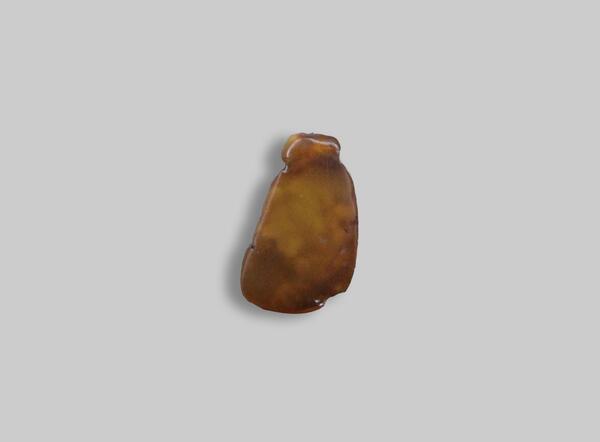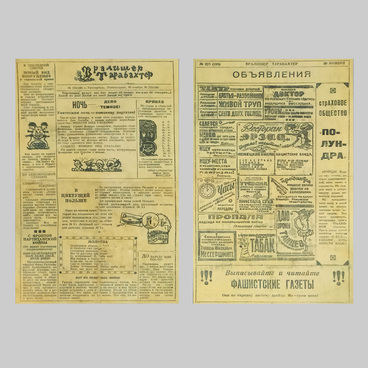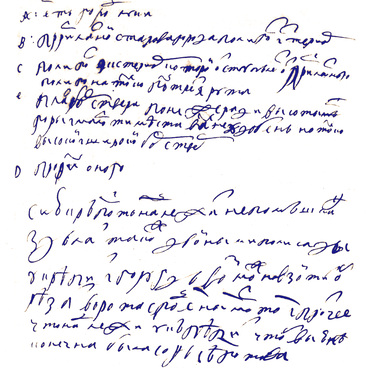After the retreat of the last glacier, conditions favorable for human settlement gradually began to develop in the southern regions of the modern Pskov region. The first settlements in this region appeared in the 6th millennium BC. Their greatest concentration was in the area of Lake Usvyatskoe, on the shore of Lake Sennitsa and on Lake Zhizhytskoe.
The members of the North-Western Archaeological Expedition of the State Hermitage under the leadership of Aleksandr Miklyaev began the archaeological study of Stone Age monuments in the south of the region in 1962. First, the expedition discovered Bronze Age sites, and, in 1963, Neolithic sites.
The expedition, led by Miklyaev for 30 years, discovered, described and registered more than 2,000 monuments, 30 of which were excavated. Aleksandr Miklyaev came to the conclusion that in the North-West of the European Plain the Neolithic covered a significant period of time. He divided it into early, middle and late Neolithic.
Archaeologists have studied monuments of the Late Paleolithic, Early Neolithic, multilayer pile settlements of the Middle and Late Neolithic. In 1969 they began studying the Naumovskoe multilayer pile settlement in the bay of the ancient Lake Zhizhitskoe, which was eventually filled with peat bogs.
In 1971, after cutting down the trees, it was necessary to define the area of the monument, its thickness, the extent and depth of the cultural layers, as well as the general stratigraphy - that is, to determine the relative position of these layers relative to each other. It was found that the total area of the settlement was over 6,000 m2, and the thickness of its cultural layers in some places was more than 2.5 m.
During these archaeological studies, a large number of fragments of clay molded vessels, objects made of stone, bone and amber, as well as many fragments of wooden buildings were found. The analysis of the excavation materials made it possible to date the monument to the 3rd– 2nd millennium BC.
The archaeologists concluded that the artifacts of the upper cultural horizon of the NaUmovskoe settlement are similar to the artifacts characteristic of the early development stages of the Northern Belarusian Corded Ware culture, and the materials of the lower horizon can be attributed to the Usvyat culture. In addition, they agreed that the Zhizhitskoe culture stands apart.
The amber items found in the Naumovskoe settlement belong to the Zhizhitskoe culture. These are pendants, pendant fragments and drilled oblong beads. These finds date back to the middle of the 3rd millennium BC.
Andrey Mazurkevich, in his article ‘Baltic amber in the Stone Age cultures of Eastern Europe’, noted: ‘The pendants with longitudinal drilling in the Eastern Baltic have no analogs. Such items are known only in the settlement of Asovets in Belarus’. The author hypothesized that the local residents made amber jewelry using Baltic raw materials.
The members of the North-Western Archaeological Expedition of the State Hermitage under the leadership of Aleksandr Miklyaev began the archaeological study of Stone Age monuments in the south of the region in 1962. First, the expedition discovered Bronze Age sites, and, in 1963, Neolithic sites.
The expedition, led by Miklyaev for 30 years, discovered, described and registered more than 2,000 monuments, 30 of which were excavated. Aleksandr Miklyaev came to the conclusion that in the North-West of the European Plain the Neolithic covered a significant period of time. He divided it into early, middle and late Neolithic.
Archaeologists have studied monuments of the Late Paleolithic, Early Neolithic, multilayer pile settlements of the Middle and Late Neolithic. In 1969 they began studying the Naumovskoe multilayer pile settlement in the bay of the ancient Lake Zhizhitskoe, which was eventually filled with peat bogs.
In 1971, after cutting down the trees, it was necessary to define the area of the monument, its thickness, the extent and depth of the cultural layers, as well as the general stratigraphy - that is, to determine the relative position of these layers relative to each other. It was found that the total area of the settlement was over 6,000 m2, and the thickness of its cultural layers in some places was more than 2.5 m.
During these archaeological studies, a large number of fragments of clay molded vessels, objects made of stone, bone and amber, as well as many fragments of wooden buildings were found. The analysis of the excavation materials made it possible to date the monument to the 3rd– 2nd millennium BC.
The archaeologists concluded that the artifacts of the upper cultural horizon of the NaUmovskoe settlement are similar to the artifacts characteristic of the early development stages of the Northern Belarusian Corded Ware culture, and the materials of the lower horizon can be attributed to the Usvyat culture. In addition, they agreed that the Zhizhitskoe culture stands apart.
The amber items found in the Naumovskoe settlement belong to the Zhizhitskoe culture. These are pendants, pendant fragments and drilled oblong beads. These finds date back to the middle of the 3rd millennium BC.
Andrey Mazurkevich, in his article ‘Baltic amber in the Stone Age cultures of Eastern Europe’, noted: ‘The pendants with longitudinal drilling in the Eastern Baltic have no analogs. Such items are known only in the settlement of Asovets in Belarus’. The author hypothesized that the local residents made amber jewelry using Baltic raw materials.



